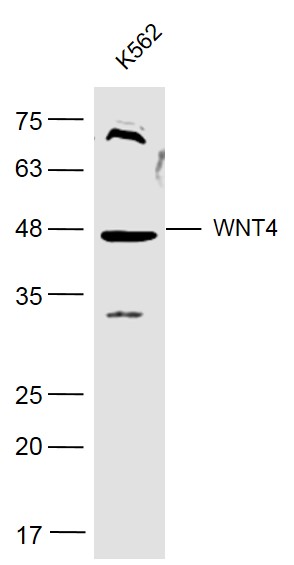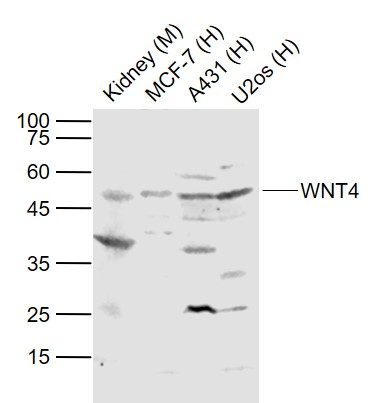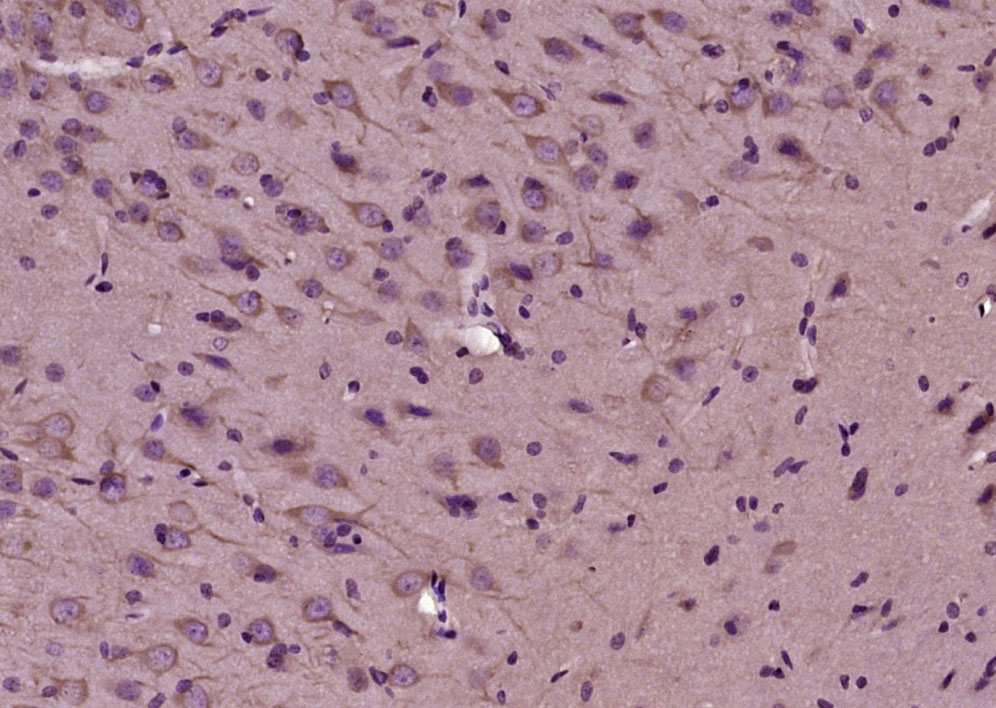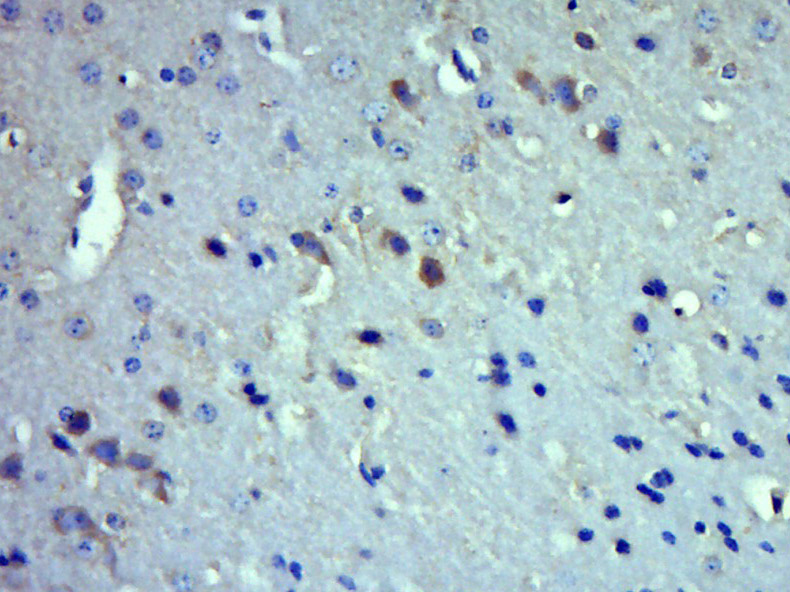
Rabbit Anti-WNT4 antibody
WNT4_HUMAN; Protein Wnt-4.
View History [Clear]
Details
Product Name WNT4 Chinese Name 信号通路Wnt4抗体 Alias WNT4_HUMAN; Protein Wnt-4. literatures Research Area Tumour Cell biology immunology Chromatin and nuclear signals Cyclin transcriptional regulatory factor Immunogen Species Rabbit Clonality Polyclonal React Species Human, Mouse, Rat, (predicted: Dog, Horse, ) Applications WB=1:500-2000 ELISA=1:5000-10000 IHC-P=1:100-500 IHC-F=1:100-500 IF=1:100-500 (Paraffin sections need antigen repair)
not yet tested in other applications.
optimal dilutions/concentrations should be determined by the end user.Theoretical molecular weight 37kDa Cellular localization Extracellular matrix Secretory protein Form Liquid Concentration 1mg/ml immunogen KLH conjugated synthetic peptide derived from human WNT4: 201-300/351 Lsotype IgG Purification affinity purified by Protein A Buffer Solution 0.01M TBS(pH7.4) with 1% BSA, 0.03% Proclin300 and 50% Glycerol. Storage Shipped at 4℃. Store at -20 °C for one year. Avoid repeated freeze/thaw cycles. Attention This product as supplied is intended for research use only, not for use in human, therapeutic or diagnostic applications. PubMed PubMed Product Detail Ligand for members of the frizzled family of seven transmembrane receptors. Probable developmental protein. May be a signaling molecule which affects the development of discrete regions of tissues. Is likely to signal over only few cell diameters (By similarity). Overexpression may be associated with abnormal proliferation in human breast tissue.
Function:
Ligand for members of the frizzled family of seven transmembrane receptors. Probable developmental protein. May be a signaling molecule which affects the development of discrete regions of tissues. Is likely to signal over only few cell diameters (By similarity). Overexpression may be associated with abnormal proliferation in human breast tissue.
Subunit:
Interacts with PORCN.
Subcellular Location:
Secreted, extracellular space, extracellular matrix.
DISEASE:
Defects in WNT4 are a cause of Rokitansky-Kuster-Hauser syndrome (RKH syndrome) [MIM:277000]; also called Mayer-Rokitansky-Kuster-Hauser syndrome (MRKH syndrome or MRKH anomaly). RKH syndrome is characterized by utero-vaginal atresia in otherwise phenotypically normal female with a normal 46,XX karyotype. Anomalies of the genital tract range from upper vaginal atresia to total Muellerian agenesis with urinary tract abnormalities. It has an incidence of approximately 1 in 5'000 newborn girls.
Defects in WNT4 are the cause of female sex reversal with dysgenesis of kidneys, adrenals, and lungs (SERKAL) [MIM:611812]; also known as SERKAL syndrome.
Defects in WNT4 are the cause of Muellerian aplasia (MULLAPL) [MIM:158330].
Similarity:
Belongs to the Wnt family.
SWISS:
P56705
Gene ID:
54361
Database links:Entrez Gene: 54361 Human
Entrez Gene: 22417 Mouse
Omim: 603490 Human
SwissProt: P56705 Human
SwissProt: P22724 Mouse
Unigene: 25766 Human
Unigene: 611722 Human
Unigene: 20355 Mouse
Product Picture
K562(Human) Cell Lysate at 30 ug
Primary: Anti- WNT4 (SL6134R) at 1/500 dilution
Secondary: IRDye800CW Goat Anti-Rabbit IgG at 1/20000 dilution
Predicted band size: 37 kD
Observed band size: 47 kD
Sample:
Lane 1: Kidney (Mouse) Lysate at 40 ug
Lane 2: MCF-7 (Human) Cell Lysate at 30 ug
Lane 3: A431 (Human) Cell Lysate at 30 ug
Lane 4: U2os (Human) Cell Lysate at 30 ug
Primary: Anti-WNT4 (SL6134R) at 1/1000 dilution
Secondary: IRDye800CW Goat Anti-Rabbit IgG at 1/20000 dilution
Predicted band size: 37 kD
Observed band size: 47 kD
Paraformaldehyde-fixed, paraffin embedded (Rat brain); Antigen retrieval by boiling in sodium citrate buffer (pH6.0) for 15min; Block endogenous peroxidase by 3% hydrogen peroxide for 20 minutes; Blocking buffer (normal goat serum) at 37°C for 30min; Antibody incubation with (WNT4) Polyclonal Antibody, Unconjugated (SL6134R) at 1:400 overnight at 4°C, followed by operating according to SP Kit(Rabbit) (sp-0023) instructionsand DAB staining.Paraformaldehyde-fixed, paraffin embedded (Mouse brain); Antigen retrieval by boiling in sodium citrate buffer (pH6.0) for 15min; Block endogenous peroxidase by 3% hydrogen peroxide for 20 minutes; Blocking buffer (normal goat serum) at 37°C for 30min; Antibody incubation with (WNT4) Polyclonal Antibody, Unconjugated (SL6134R) at 1:400 overnight at 4°C, followed by operating according to SP Kit(Rabbit) (sp-0023) instructionsand DAB staining.
References (0)
No References
Bought notes(bought amounts latest0)
No one bought this product
User Comment(Total0User Comment Num)
- No comment






 +86 571 56623320
+86 571 56623320
 +86 18668110335
+86 18668110335

